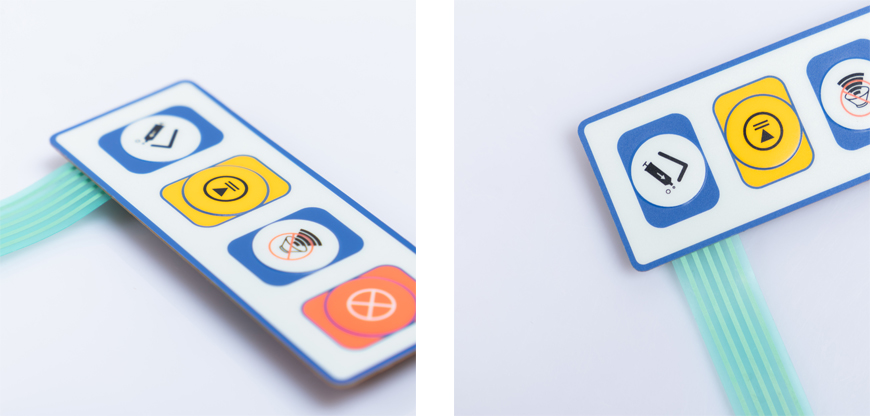
In today's fast-paced digital world, technology is constantly evolving to meet the demands of consumers and industries alike. One such innovation that has played a crucial role in user interface design is the flat membrane switch. In this article, we will delve deep into the world of flat membrane switches, exploring their construction, applications, advantages, and the impact they have on modern devices.

Membrane switches are thin, flexible, and durable electronic components that serve as a crucial part of various electronic devices. These switches consist of multiple layers, including a flexible top layer, a printed circuit, and an adhesive bottom layer.
Top Layer: The top layer is typically made of polyester or polycarbonate and is where users apply pressure to activate the switch.
Printed Circuit: Beneath the top layer, there is a printed circuit that contains conductive traces. When pressure is applied, these traces make contact, completing an electrical circuit and triggering the desired action.
Adhesive Bottom Layer: The bottom layer is adhesive and attaches the membrane switch to the device's surface.
Flat membrane switches have found their way into a wide range of industries due to their versatility and durability. Some notable applications include:
1. Consumer Electronics
Flat membrane switches are commonly used in consumer electronics such as TV remote controls, microwave keypads, and game controllers. Their low profile and customizable design make them ideal for these applications.
2. Medical Devices
In the medical field, hygiene and ease of cleaning are essential. Membrane switches are used in medical devices like patient monitoring systems and diagnostic equipment due to their sealed design, which prevents liquid ingress.
3. Industrial Control Panels
Manufacturing and industrial settings often require robust interfaces. Flat membrane switches are resistant to dust, moisture, and chemicals, making them suitable for use in control panels for machinery and equipment.
4. Aerospace and Military
Aerospace and military applications demand reliability and durability. Membrane switches are used in aircraft control panels and military equipment, where they can withstand extreme conditions.
1. Durability
Flat membrane switches are designed to withstand millions of actuations, ensuring longevity and reliability in various applications.
2. Customization
Manufacturers can easily customize membrane switches to meet specific design and branding requirements, including graphics, colors, and tactile feedback.
3. Cost-Effective
Compared to traditional mechanical switches, membrane switches are cost-effective to produce, making them an attractive option for manufacturers.
4. Compact Design
The flat and compact design of membrane switches allows for space-saving in device design, making them suitable for portable and handheld devices.
Flat membrane switches have revolutionized modern devices by offering a reliable and user-friendly interface. Their sleek design, durability, and versatility have made them an integral part of everyday technology, improving user experiences across various industries.
In conclusion, flat membrane switches have emerged as a cornerstone of modern interface technology. Their durability, customizability, and cost-effectiveness have made them indispensable in consumer electronics, medical devices, industrial settings, and aerospace applications. As technology continues to advance, we can expect flat membrane switches to play an even more significant role in shaping our interactions with electronic devices.
1. Are membrane switches waterproof?
Yes, membrane switches can be designed to be waterproof by using appropriate materials and sealing techniques.
2. How long do membrane switches last?
Membrane switches are designed to last for millions of actuations, ensuring long-term reliability.
3. Can membrane switches be backlit?
Yes, membrane switches can incorporate backlighting for improved visibility in low-light conditions.
4. What is the advantage of using a flat membrane switch over a traditional button?
Flat membrane switches offer a sleeker design, customization options, and greater durability compared to traditional buttons.
5. Are membrane switches compatible with touchscreens?
Membrane switches and touchscreens can be used together to provide a multifunctional user interface in some devices.